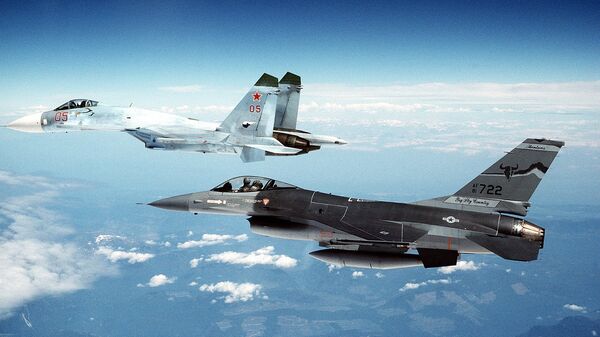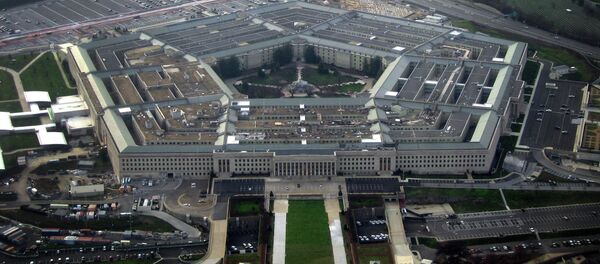This incident, however, wasn’t a singular occurrence, to put it mildly, as only a day prior to that, on June 20, Russia scrambled its fighters to intercept a US Boeing RC-135 surveillance plane, and on June 6 Russian fighters intercepted a US B-52 strategic bomber which attempted to approach Russia’s borders; both intercepts also took place over the Baltic Sea.
It should be noted that while the Pentagon officials sought to gloss over the incident involving Shoigu’s plane, claiming that the NATO fighter was merely following standard procedure, they blasted the RC-135 intercept, branding the Russian pilot’s actions as unsafe, according to RT.
However, Ret. Lt. Gen. Aytech Bizhev, former Deputy Commander of the Russian Air Force, said the attempt to ‘escort’ the Defense Minister’s plane looks like a deliberate provocation.
"It was a violation of flight rules over international waters. The US Air Force aircraft created a dangerous situation over the Baltic Sea by approaching (Shoigu’s plane) at an unacceptable distance according to international law. Anything could’ve happened: the planes might’ve collided, the pilot’s hand could’ve slipped, and the fighter’s slipstream could’ve caused the plane to stall. There were many risk factors involved," he said.
General Bizhev also remarked that while the NATO F-16 obviously didn’t intend to attack the Russian Defense Minister’s plane, the F-16 pilot was showing off.
Meanwhile, the Russian Defense Ministry pointed out that during the past week NATO surveillance planes had attempted to approach Russia’s borders on at least 15 occasions.
The number of incidents involving Russian and NATO military aircraft has continued to steadily increase since 2014, when the relations between Moscow and Washington took a turn for the worse amid the crisis in Ukraine.
While NATO surveillance aircraft continue to probe Russian borders, the alliance also keeps funneling troops and military hardware to Eastern Europe, effectively creating a sizeable strike force right on Russia’s doorstep while claiming that this military buildup is a purely defensive measure.
While Russia moves to create adequate countermeasures to NATO’s new strategy, the alliance seeks to gain more intelligence about Moscow’s military preparations, which results in a steadily increasing number of surveillance flights near the country’s borders and therefore in an increasing number of aerial intercepts.
It should also be noted that while in September 2016 the Pentagon claimed that US military aircraft conducting flights over the Baltic Sea would keep their transponders on – a move that might’ve helped to deescalate tensions and avoid potentially dangerous incidents – it appears that the US leadership chose to renege on this promise.





